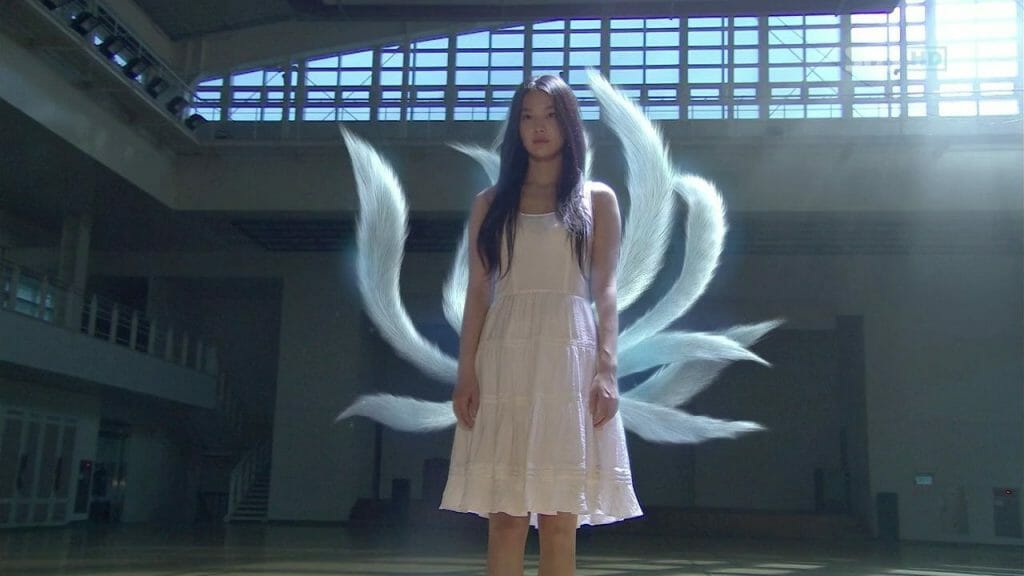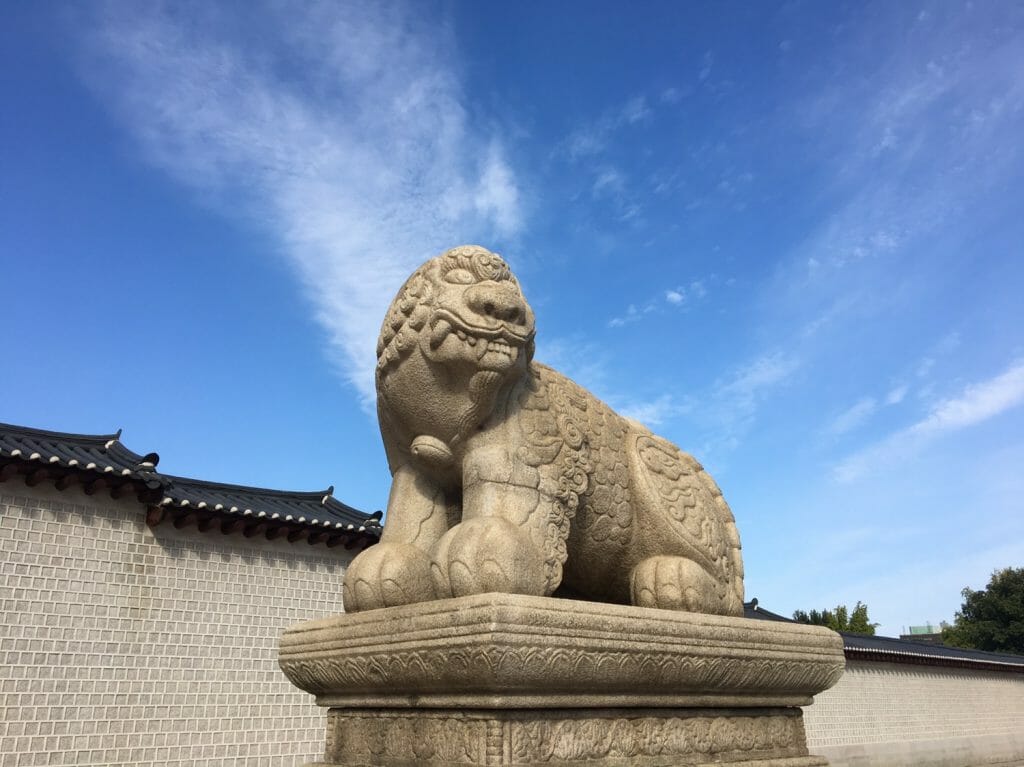
8 Interesting Korean Myths
Many of the Korean myths and folktales were introduced through Shamanism, with the believe that spirits possess objects on earth.
You might’ve recognized some of the Koreans myths that have been adapted in popular Korean dramas, but there are actually more to what that has been shown in those dramas.
1. 도깨비 Dokkaebi (Goblin)

Gong Yoo in the drama Goblin
Unlike the Goblin who takes the form of a good-looking man and known as ‘the great and lonely god’ in the popular Korean drama Goblin, Dokkaebi, or Korean goblins in the myth are normally portrayed as demonic-looking creatures with horns.
They are also not derived from humans, and they are believed to be mostly harmless despite their monstrous appearance.
Dokkaebi are also known as mischievious creatures that enjoys tricking people, but it also rewards those who are good.
They usually carry around a wooden club called ‘Dokkaebi bangmangi’ (도깨비 방망이), which has the ability to summon any items they want.

Image credit: Pinterest
2. 귀신 Gwisin (Ghost)

Scene from The Master's Sun
Image credit: Soompi
Gwisin, known as Korean Ghosts are believed to be the wandering spirits of humans who have died with ‘unfinished businesses’. They will be trapped in the mortal realm until they resolved their unfinished business.
Some of the unfinished businesses can be the desire to stay longer with loved ones, revenge or guilt.
In the Korean myth, there are four types of ghosts.
- Cheonyeo gwishin (처녀귀신) – Virgin Ghost
- Chonggak gwishin (총각귀신) – Ghost of unmarried man
- Dalgyal gwishin (달걀귀신) – Egg Ghost
- Mul gwishin (물귀신) – Water Ghost
Not to forget, there are also popular Korean dramas and movies about ghosts, such as The Master's Sun, A Korean Odyssey and Hotel del Luna.
3. 저승사자 Jeosung Saja (Grim Reaper)

Image credit: Soompi
Jeosung Saja, known as Grim Reaper in the Western culture, are another popular mythological being in the Korean myth.
They have been featured in popular Korean dramas such as Goblin, and Black.
In the Korean culture, they are known as the Afterlife Messengers who guide those who have just died to the afterlife.
Traditionally, Jeosung Saja is dressed in black hanbok (Korean attire in the Joseon era) with a traditional Korean hat, Gat (갓).

In modern days, Jeosung Saja is portrayed wearing long dark coats with a fedora, just like how Lee Dong Wook is portrayed in the drama Goblin.
4. 구미호 Gumiho (Nine-tailed fox)

Shin Min Ah in My Girlfriend is a Gumiho
Photo credit: Soompi
The Gumiho, known as a Nine-tailed fox is also one of the popular creatures in Korean myth.
Unlike the ones that are portrayed in Korean dramas such as Grudge: The Revolt of Gumiho and My Girlfriend is a Gumiho, the Gumiho is known as an evil creature in the Korean myths and folktales.
A Gumiho is known to have lived up to 1000 years and usually takes form of a beautiful girl who seduces men and feed on their hearts or livers.
There are also believes that if a Gumiho wishes to be human, she has to refrain from feeding on humans for a thousand days.
5. 용 Yong (Dragon)

Image credit: Amino app
Yong are Korean dragons that were believed to be wise creatures representing rain and agriculture, unlike the European dragons that are more vicious and breathe fire.
They look almost similar like the Chinese dragons, except the Yong has longer beard and four claws. They also wield an orb with them, called Yeouiju (여의주), which is a mythical wish fulfilling stone.
But only the four-clawed dragons are able to wield the Yeouiju because they have the power of creation, which makes them the most powerful dragons.
6. 해태 Haetae/Haechi (Lion with scales and a horn on its head)

Haechi statue outside of Gwanghwamun Gate
Image credit: Favekorea
The Haetae, also known as Haechi is probably something you’ll often see if you visit Seoul, and it’s been a symbol of Seoul since 2009. It looks like a lion but has horns on its forehead and scales on its body.
According to Korean myth, this creature symbolises justice, and punishes those who are wrong with its horns.
It also acts as a guardian in warding off natural disasters, especially fires.
The believe of the Haechi as a protector is particulary common in the Joseon era, which was why many Haechi statues were built around this time.
If you’ve been to Korea, you’ve probably seen Haechi statues at historical landmarks, such as Gwanghwamun.
7. 삼족오 Samjoko (Three-legged crow)

Murals of the Samjoko (Left from Han mural, right from Goguryeo mural
Image credit: Korean Historical Dramas
Known as a three-legged crow, the Samjoko symbolised power in the Goguryeo (고구려) Dynasty, and was believed to live in the Sun.
The Samjoko was worshipped as Sun Gods and was considered to be mightier than the Dragons.
Until now, the Samjoko still represents the Goguryeo Dynasty.
Although it’s not mainstream in the Korean media, it was featured in one of the modern historic dramas in 2006, Jumong.
8. 불 개 Bul-Gae (Fire dogs)

Image credit: David DePasquale
The Bul-Gae, literally meaning Fire Dog when it’s translated, were creatures originated from the kingdom of darkness, Gamangnara.
If you’ve been curious and wondering how the eclipse occur, here’s a mythical explanation for it!
In Korean myth, the cosmological tales and legends such as the “Ilsik, Wolsik” legend explains how the Bul-Gae caused the occurrences of eclipse.
According to the legend, the King of Gamangnara was concerned of the darkness that surrounded the kingdom, thus he sent out the Bul-Gae to capture the sun and moon.
But both the sun and moon were either too hot or cold for the dogs to handle, burning or freezing them when they tried to carry it with their mouths.
Not giving up, the King sent out more Bul-Gae to capture the sun and moon but they all failed each time.
Thus, it is believed that each time the Bul-Gae bit the sun and moon, a solar or lunar eclipse would occur.
I hope these tales of Korean myths caught your interest. Let us know which Korean myth is your favourite in the comments section!
Also read, What Ghost Do Koreans Believe in?












Responses